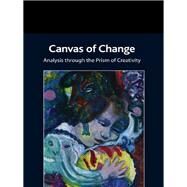The Canvas of Change
, by Kogan, Ilany- ISBN: 9781780490786 | 178049078X
- Cover: Paperback
- Copyright: 8/30/2012
This book presents a detailed account of two analytic treatments viewed through the prism of creativity. The book is unique in that it examines analysis from this particular viewpoint, as illustrated by these case studies. The first part of the book contains a review of the classical and contemporary literature on the source and function of creativity. Creativity is then examined from the perspective of several analytic models Freudian, Kleinian, and post-Kleinian. The second and third parts of the book present case illustrations that deal with the use of creative activity in analysis. The creative use of biblical stories in the case of David, or the use of paintings and poems in the case of Rachel, portrayed the inner reality of these patients. David's violent and incestuous biblical stories reflected his world of incestuous and destructive wishes towards his primary objects (and towards the therapist in the transference). Rachel's paintings and poems conveyed her unconscious conflicts, depressive fantasies and anxieties, stemming from her fusion with her mother who was a child Holocaust survivor. Working through their relationships with their primary objects and their self perception, as revealed by these creative activities in analysis, facilitated the patients' mourning. The work of mourning incurred in this process helped both David and Rachel achieve a better perception of reality and of their self, unite the fragmented aspects of the self into a whole, and improve their relationships with their primary objects. The book concludes with the therapist's role in facilitating the creative process, which in turn facilitates the therapeutic process. It contains a summary of the role of creative activity in treatment, a discussion of some of the ways in which the therapist facilitated the creative process in order to arrive at the amazing discoveries which it engenders, and a discussion of the way in which the patients' creativity was successfully incorporated in their treatment. The therapist's awareness of the patients' creativity and its important role in solving the patients' conflicting life and death wishes enabled her to help them recognize their aggressive and destructive wishes and work them through. Both patients emerged from a long analysis better integrated.







